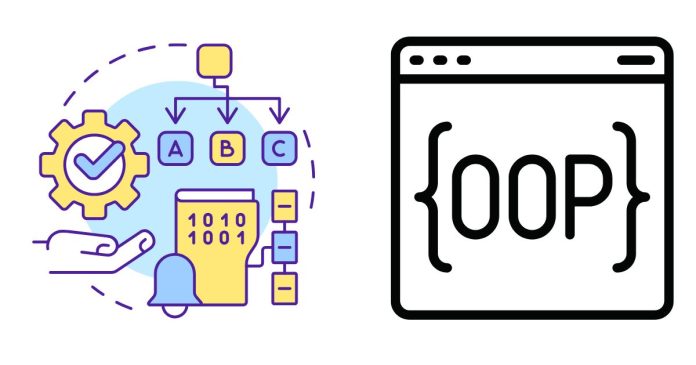Aspect-Oriented Programming (AOP) is a programming paradigm that aims to increase modularity by allowing the separation of cross-cutting concerns. It complements object-oriented programming (OOP) by enabling developers to cleanly modularize functionality that affects multiple parts of an application (such as logging, security, performance monitoring, etc.).
What Are Cross-Cutting Concerns?
Cross-cutting concerns are functionalities that are not part of the core business logic but are needed throughout an application. Examples include:
- Logging
- Transaction Management
- Security/Authentication
- Performance Monitoring
- Error Handling
In traditional programming (OOP or procedural), these concerns often lead to code duplication and reduced modularity because they are scattered across various modules or components.
Key Concepts in AOP
- Aspect:
- An aspect is a module that encapsulates a cross-cutting concern.
- For example, an aspect for logging might define where, when, and how logging is applied throughout the application.
- Advice:
- Advice is the code that is executed at a specific join point. It’s the action taken by an aspect.
- Types of advice:
- Before Advice: Runs before the method execution.
- After Advice: Runs after the method execution (regardless of success or failure).
- After Returning Advice: Runs after the method execution if it completes successfully.
- After Throwing Advice: Runs if the method throws an exception.
- Around Advice: Wraps the method execution, allowing you to control whether the method is executed and to add custom logic before and after.
- Join Point:
- A join point is a specific point in the execution of a program, such as method execution, object instantiation, or field access, where an aspect can intervene.
- Pointcut:
- A pointcut is an expression that defines where an advice should be applied. For example, you can use a pointcut to specify that a logging aspect should run before all methods in a specific package.
- Weaving:
- Weaving is the process of applying aspects to a target object to create an advised (or enhanced) object.
- Types of weaving:
- Compile-Time Weaving: Aspects are applied at compile time.
- Load-Time Weaving: Aspects are applied when the classes are loaded into memory.
- Runtime Weaving: Aspects are applied at runtime, usually via proxies.
Advantages of AOP
- Improved Code Modularity:
- Cross-cutting concerns are encapsulated in separate aspects, making the core business logic cleaner and more focused.
- Reduced Code Duplication:
- Common functionality (e.g., logging or security) is centralized in aspects instead of being scattered across multiple classes.
- Improved Maintainability:
- Changes to cross-cutting concerns are made in a single place (the aspect) rather than in multiple classes.
- Better Separation of Concerns:
- AOP separates what the application does (core logic) from how it does it (cross-cutting concerns).
AOP in Practice
AOP is implemented in various programming languages and frameworks. Some popular examples include:
- Java (Spring AOP and AspectJ):
- Spring AOP: A module of the Spring Framework that provides AOP support.
- AspectJ: A powerful and full-featured AOP framework for Java.
- Example:
@Aspect public class LoggingAspect { @Before("execution(* com.example.service.*.*(..))") public void logBeforeMethod(JoinPoint joinPoint) { System.out.println("Before method: " + joinPoint.getSignature().getName()); } }
- .NET Framework:
- AOP can be implemented using libraries like PostSharp or Castle Windsor.
- Python:
- Python does not have built-in AOP, but it can be achieved using decorators or libraries like aspectlib.
- Example with decorators:
def log_before(func): def wrapper(*args, **kwargs): print(f"Before calling {func.__name__}") return func(*args, **kwargs) return wrapper @log_before def some_function(): print("Executing function!") some_function()
- JavaScript:
- AOP can be achieved with libraries like meld or manually implemented using proxies or function wrappers.
When to Use AOP
- When an application has significant cross-cutting concerns.
- When you want to keep core business logic clean and free from boilerplate code.
- When you need centralized control over aspects like logging, security, or error handling.
Limitations of AOP
- Complexity:
- Understanding and debugging AOP can be challenging due to the dynamic nature of weaving.
- Performance Overhead:
- Runtime weaving and proxies may introduce performance overhead.
- Overuse:
- Using AOP for trivial tasks can lead to unnecessary complexity.
Conclusion
Aspect-Oriented Programming is a powerful paradigm for managing cross-cutting concerns. By encapsulating these concerns in separate aspects, it promotes cleaner, more modular, and maintainable code. However, it should be used judiciously to avoid unnecessary complexity.
Let me know if you’d like more examples or an explanation of AOP in a specific language/framework!


